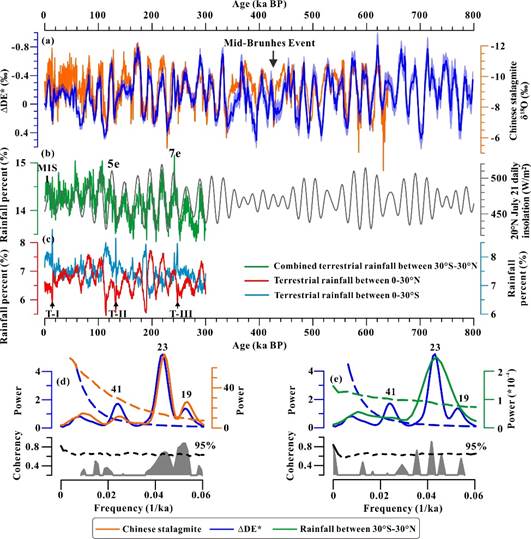On October 7th, a research article, titled “Dole effect as a measurement of the low-latitude hydrological cycle over the past 800 ka”, led by Associate Prof. Enqing Huang from State Key Laboratory of Marine Geology and School of Ocean and Earth Science, Tongji University, was published in Science Advances.

Over the last ten years, the paleoclimatology study group of Tongji University has been exploring the importance of low-latitude forcing and processes in the global climate. The low-latitude climate is predominately influenced by monsoons, a seasonal reversal in rainfall. A recent progress is to recognize the coherent variability of regional monsoons across orbital to annual time scales, which further leads to the establishment of an evolving concept, “the geological evolution of the global monsoon”. Since monsoon dynamics is viewed as a global system rather than a regional phenomenon, a key issue is weather there is a common proxy to measure global monsoon changes on geological time scales?
In this article, through using a new calculation method, Enqing Huang and his colleagues obtained a reconstruction of Dole Effect (the oxygen isotope offset between the atmospheric O2 and the sea-surface water) for the past 800 thousand years. This Dole Effect is characterized by strong variance in the precession bands but nearly undetectable variance in the 100-ka bands. The spectral feature of this new Dole Effect highlights the role of the low-latitude hydrology. Isotope fractionation along with the land-to-ocean moisture transfer, evaporation and soil respiration over the broad tropical areas can considered to account for the Dole Effect fluctuation on orbital time scales, while the influence of high-latitude climate changes is negligible. In turn, the Dole Effect is thus taken as a proxy to indicate changes in the global monsoon intensity. Indeed, the Dole Effect is significantly correlated with simulated rainfall changes over the low-latitude areas.
Because two thirds of the global population live in monsoon areas nowadays, monsoon dynamics can give rise to profound societal and economic concerns. According to this study, the global monsoon and the overall rainfall over the low-latitude areas are generally weak at the moment owing to muted precession cycles. This geological background together with hydrological changes induced by the global warming trend, may possibly result in serious problems of water supply in low-latitude areas in near future.

Fig.1 Comparison of the Dole Effect, Chinese stalagmite δ18O and simulated low-latitude rainfall changes over the past 800 thousand years. The three time sequences all show strong precession cycles.
This paper is co-authored by Pinxian Wang, Yue Wang, Jun Tian and Shihan Li from Tongji University, Mi Yan from Nanjing Normal University, and Wentao Ma from Second Institute of Oceanography. This research is funded by the National Science Foundation of China and the National Key Research and Development Program.
Original publication: https://advances.sciencemag.org/content/6/41/eaba4823.full